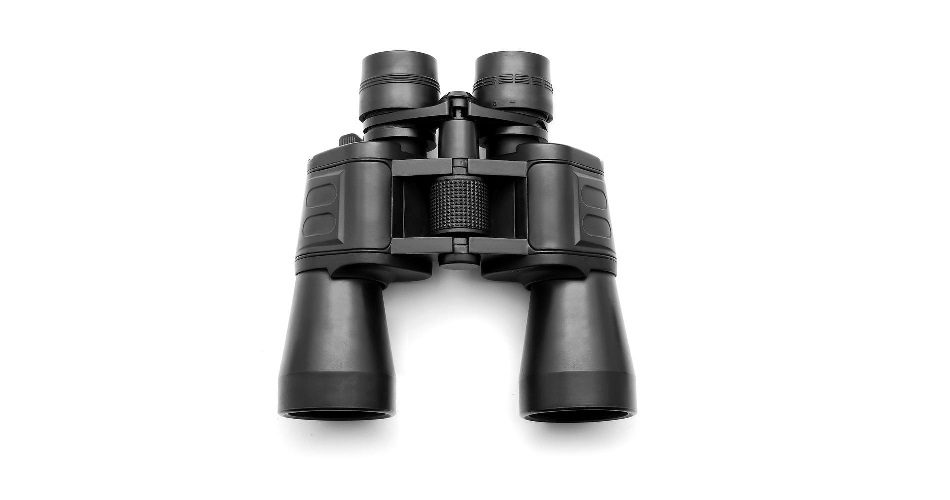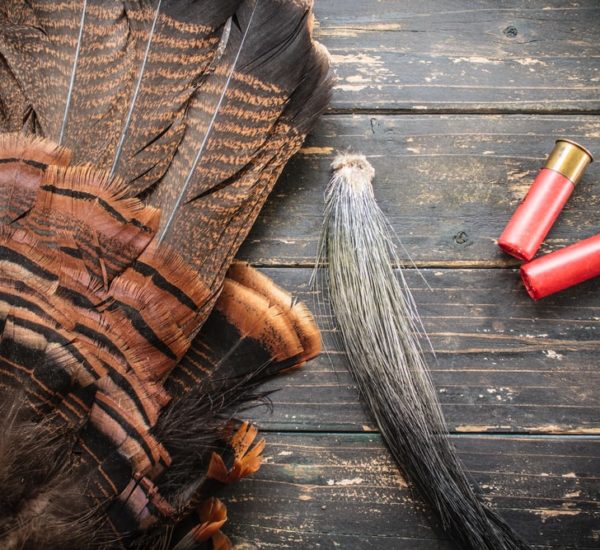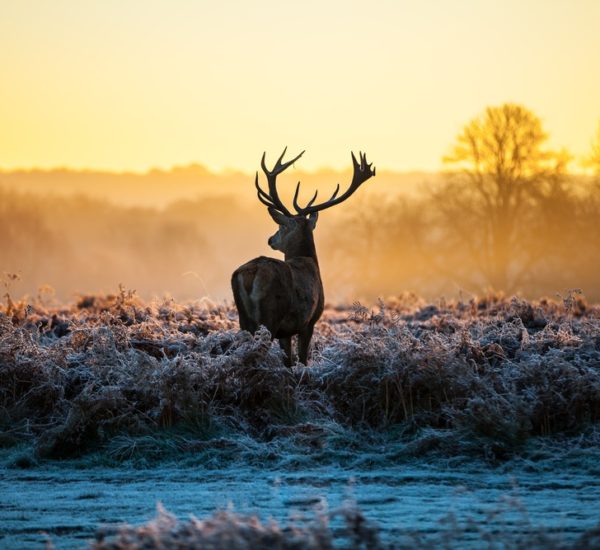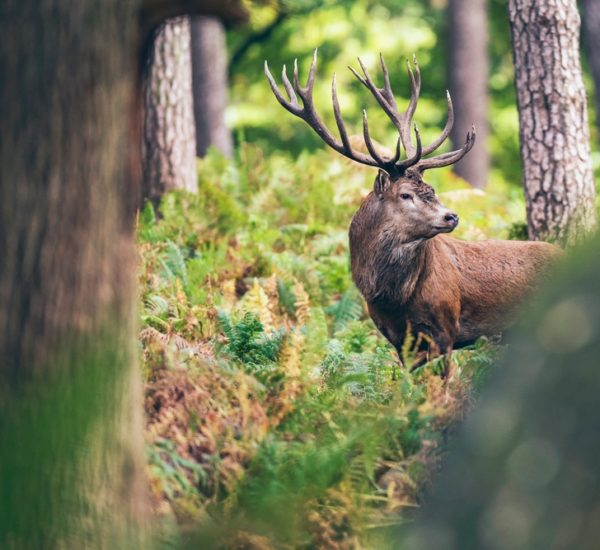Let us be honest; using a pair of binoculars involves some technical know-how. Without understanding the ins and outs of these optical magnification instruments, you may be missing out on the advantages of using these handy tools.
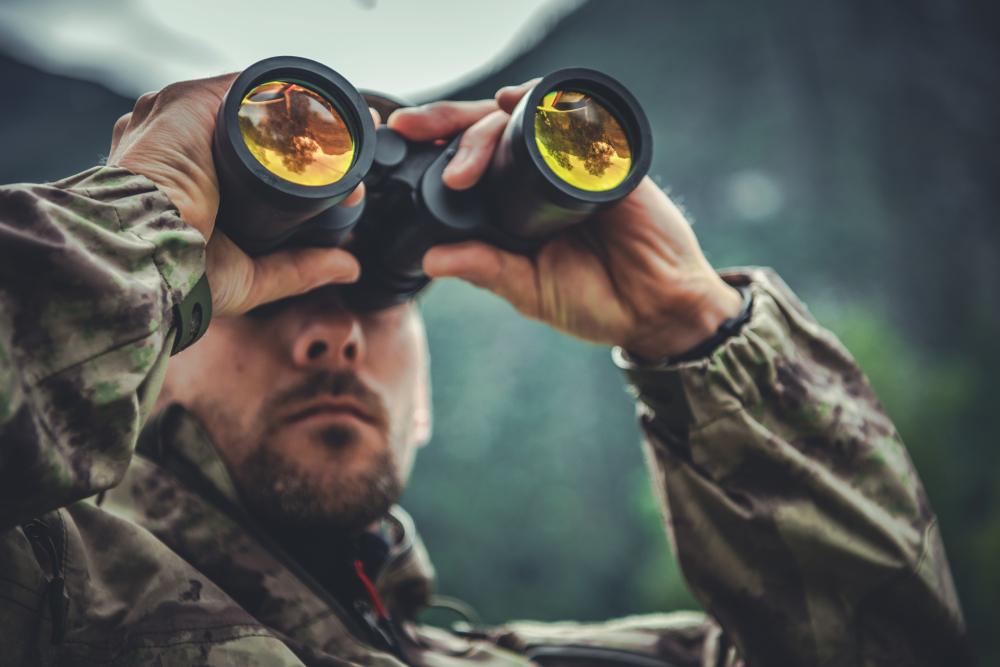
This article tells you everything you need to know to start using your binoculars like a pro. First, we’ll learn each part of this telescopic wonder, then share the best ways to use them for maximum results.
Ready to get started? Let’s go!
The Big Picture
First, a simple definition: binoculars comprise two small telescopes mounted on a metal or plastic frame, allowing you to view images as if they were much closer to you. A telescope –with which you are probably familiar – is single barrel with one eye piece, often much stronger in terms of magnification, and used mainly for watching the night sky. Binoculars allow the user to comfortably use both eyes, delivering a stereoscopic (two pictures) image with more depth and solidity.
It starts with the parts!
Learning anything new comes with its challenges; you may find the process awkward or daunting without a bit of help. Understanding binocular use is no different, and the best place to start is by becoming familiar with each part of this device. We’ll start from the outside and work our way in.
The Case
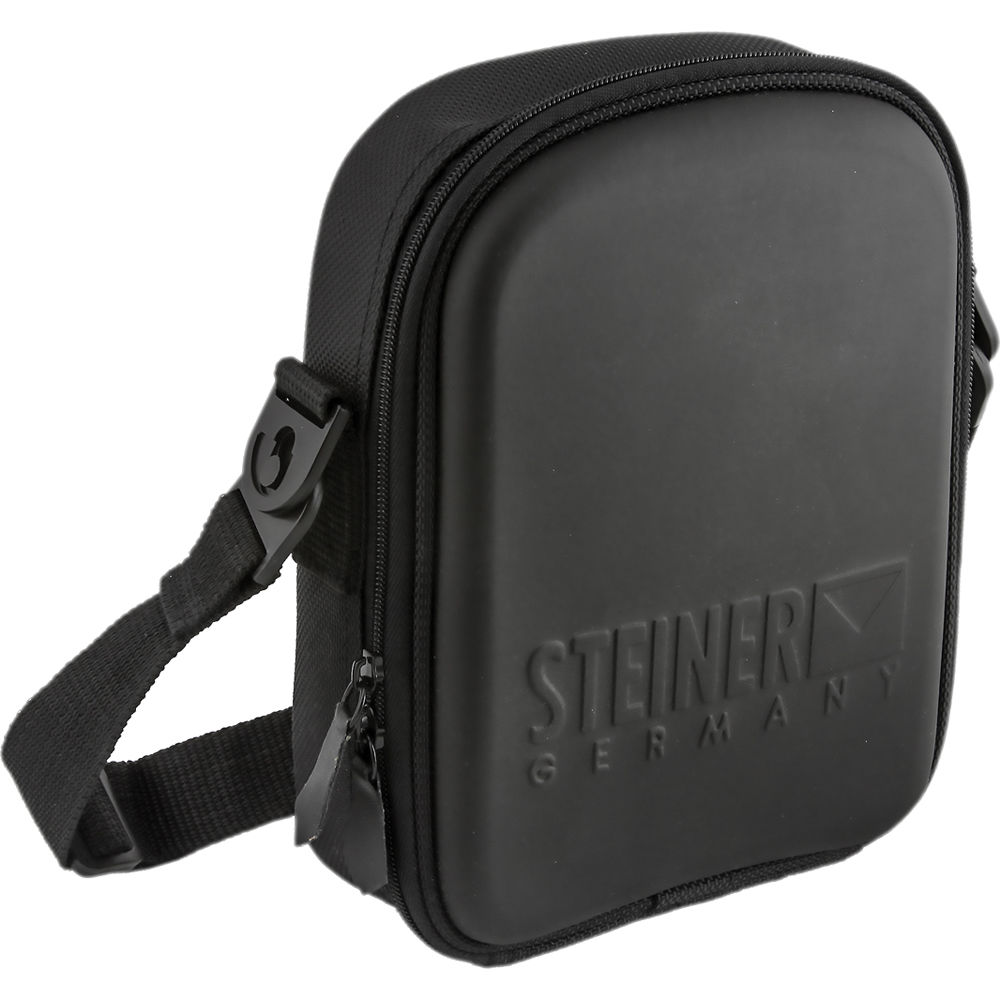
Usually, your binoculars will come with a case to help keep them clean and protected. Be certain to keep your field glasses in tip-top shape. Inside, look for the case’s shoulder strap, neck strap, lens cleaning cloth, and lens caps. NOTE: it’s essential to keep the small lens cleaning cloth safe and away from dirt, as you’ll use it often to keep your lenses crystal clear. Do not use harsh detergents or scrubbers on your lenses; those may scratch or dull the glass, ruining your perfect view!
Case and Binocular Straps
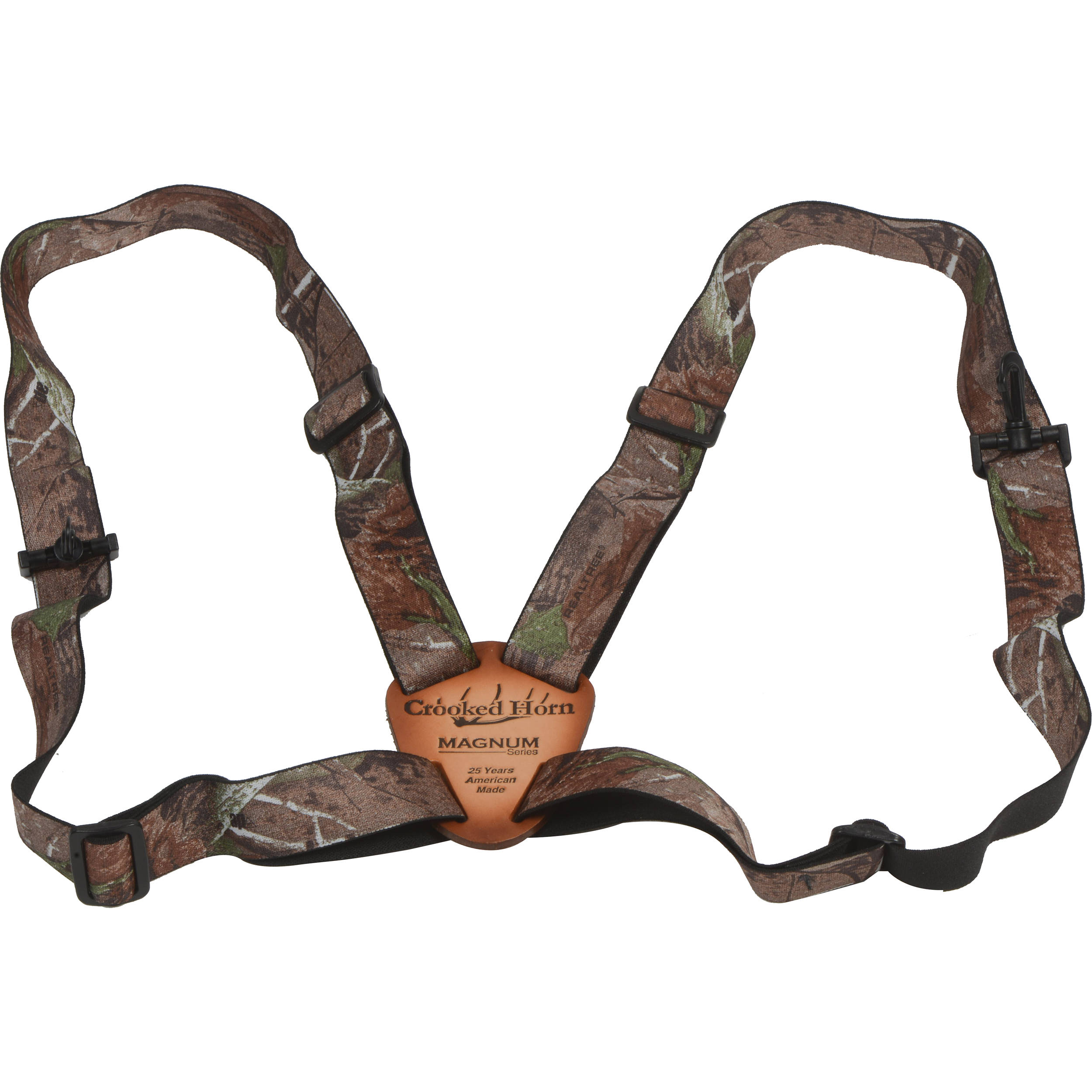
The case’s shoulder strap allows you to sling the case across a shoulder for safekeeping, whether the binoculars are in use or not. You’ll also find a strap for the binoculars; make sure it is securely clipped so you can safely wear the binoculars around your neck.
Lens caps
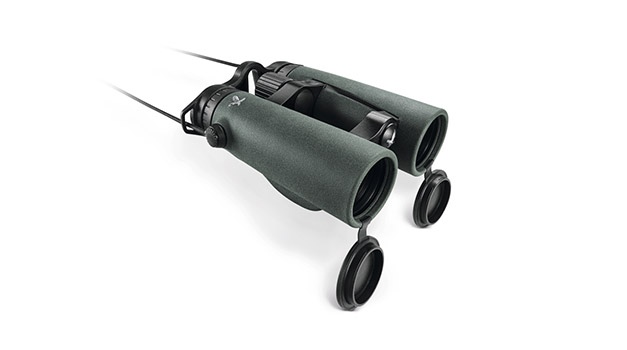
The lens caps protect your binocular’s glass eyepieces. Since there are four – two on both ends – you should have four caps. The front and/or back pair are usually in one piece to avoid losing one side or the other. Sometimes manufacturers permanently attach the caps via cord or chain to the body of the binoculars.
Now, on to the binoculars!
Lenses

The curved glass lenses are the most essential part of the device. There are four of them; two on the front and two on the back, and the two sets differ in size and function.
The objective lenses are in front – away from your eyes – and the back lenses are the oculars (eyepieces), or simply put, the part you look through. Usually, the eyepieces are smaller than the objective lenses.
Remember that your lenses must be kept safe from scratches or dirt; use the provided lens cloth and always keep the lens covers on when not in use. You can find special cleaning solutions in any camera shop; otherwise, a quarter-cup of water mixed with a half teaspoon of white vinegar will do the trick nicely!
Eye cups
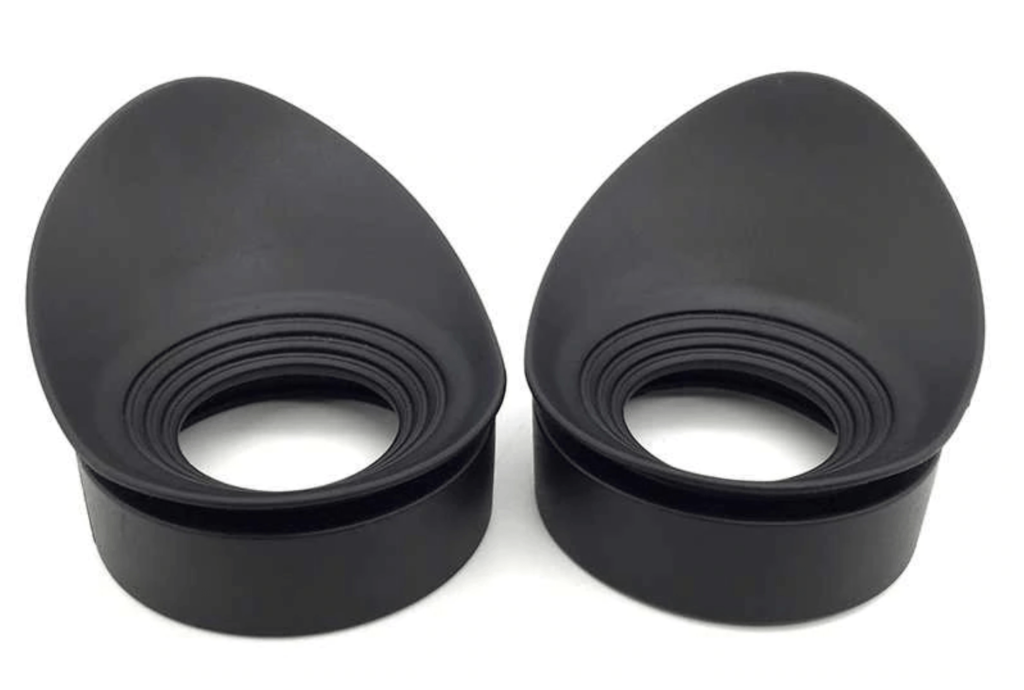
Most binoculars come with eye cups, and these soft rubber pieces surround the eyepieces to keep light from entering while the user is looking through them. Aside from making it more comfortable, they can usually be twisted inward or outward for the exact extension needed for better focus, keeping your pupils the optimal distance from the lens. Some eye cups come with a swivel so that those wearing glasses can swing them up and away while viewing images.
Barrel
The barrel – one on each side – sits between the two sets of lenses. Depending on your binocular’s design, the two parts are usually joined by one pivot point (or hinge), allowing you to adjust the distance between the eyepieces. Some models have two pivot points. Since the distances between users’ eyes are different, this hinge adjustment allows you to compensate and customize that distance. Once adjusted for your eyes, the barrels should stay in the desired position.
Diopter
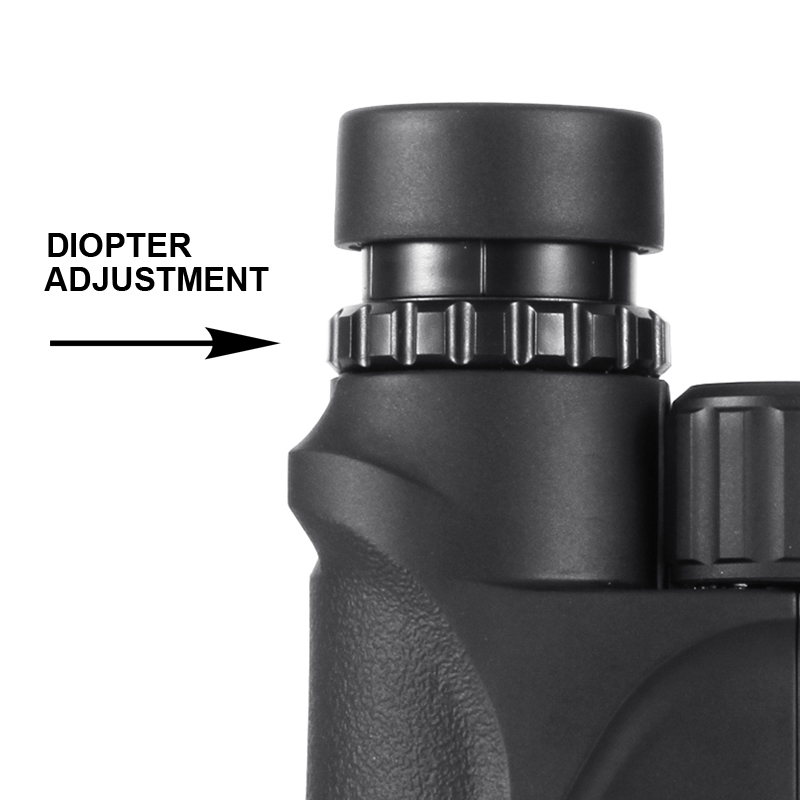
A diopter measures the power of each lens, allowing the user to adjust focus for each eye independently; it is common for each eye’s strength to be different, so the diopter for each eye allows the user to customize to their vision strength. This dial usually rests just ahead of each eye cup.
Focus Knob
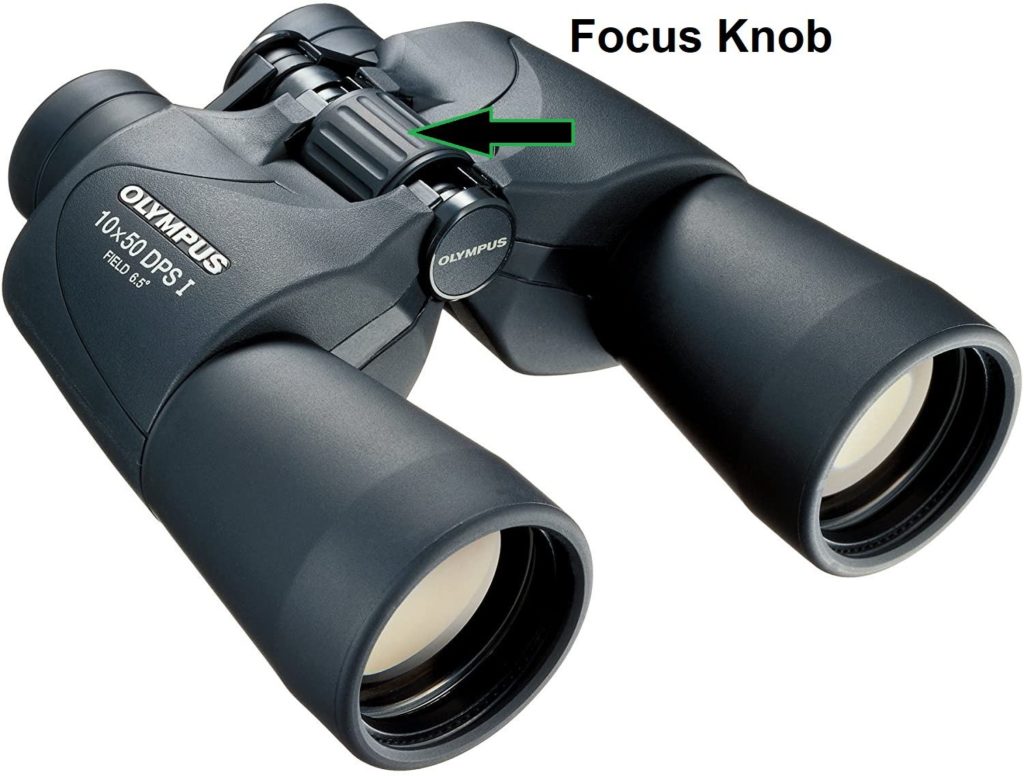
Finally, you have the focus knob (dial or wheel), usually located on the pivot piece. This independent focus mechanism fixes focal distance simultaneously; it affects each eye’s focus in unity, unlike the separate diopters mentioned above. Some binoculars have no focus knobs and are called fixed focus binoculars.
Now that you know what you have, let’s find out how you use it properly.
How do you use your binoculars effectively?
Using a pair of binoculars seems straightforward enough, and once you’ve learned to use your set, you’re good to go, right? Following the steps below will get you off on the right foot, but remember that using the best binoculars makes the whole process more comfortable and rewarding.
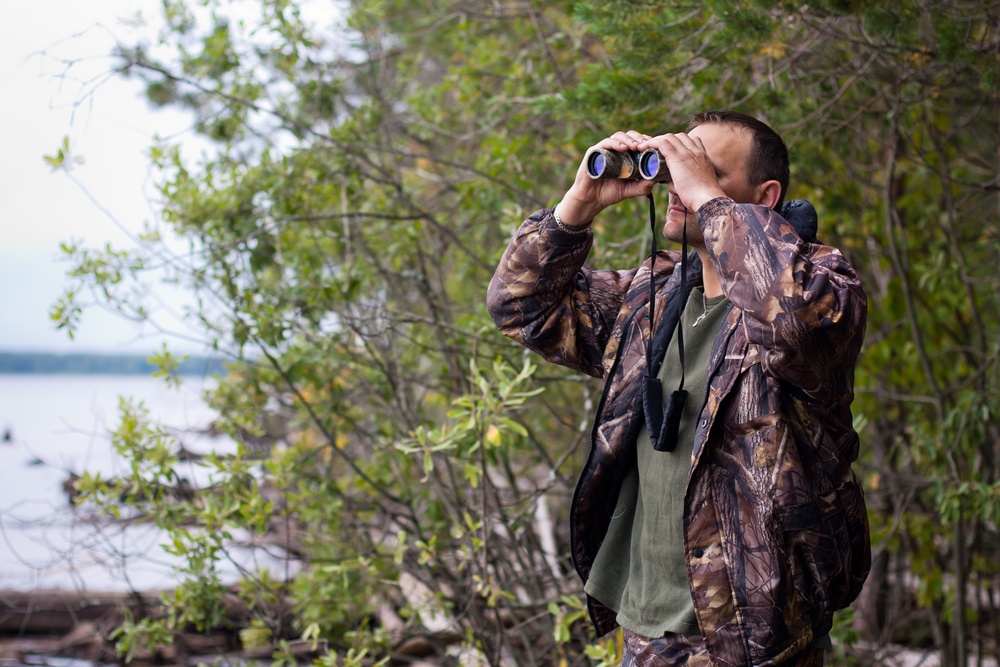
While there are no fixed rules about how you follow each step, the following suggestions are a good place to start.
1. Choose a Test Target
This might be any object around you; a sign, a tree, a vehicle. Whatever you choose, it should be stationary and at a distance of about 30 feet away.
2. Adjust your eyecups
For those not wearing glasses, the eye-cups should remain up to retain the entire field of view; for those with glasses, turn them down.
3. Width adjustment for a single view
You’ve probably experienced an error involving the wrong barrel width before. Perhaps you’ve seen black borders, two views colliding, or simply an unfocused view. Aside from the frustration, this could damage your eyesight. The center hinge allows you to adjust the distance between the two eyepieces, so you have a full and round image with both eyes – and separately. This is called a single view.
4. Set your focus
If you are using binoculars with only a focus knob, you’ll use this alone for focus. If you have diopters (focus wheels on each eyepiece), you’ll be compensating for each eye’s strength.
With the focus knob and diopters, you can adjust the focus of both lenses:
- Turn the focus wheel and the diopter in the clockwise direction until they stop moving.
- Look through one ocular with one eye open; now, slowly twist the focus wheel in the opposite direction.
- As you turn the wheel, observe your target, and try to get the sharpest image possible.
- You are almost there. Now, cover the eyepiece you have been using and observe with the other one. If you see a small or blurry image, turn that diopter ring until your target is in perfect focus.
From here, you simply need to twist the focus wheel when your target is closer or further away.
Still, depending on what you want to use the binoculars for, there’s a bit more to consider. Let’s look at using your binoculars for bird-watching.
Viewing Birds with Binoculars
Though not difficult, bird-watching with bird binoculars does present a few unique challenges.
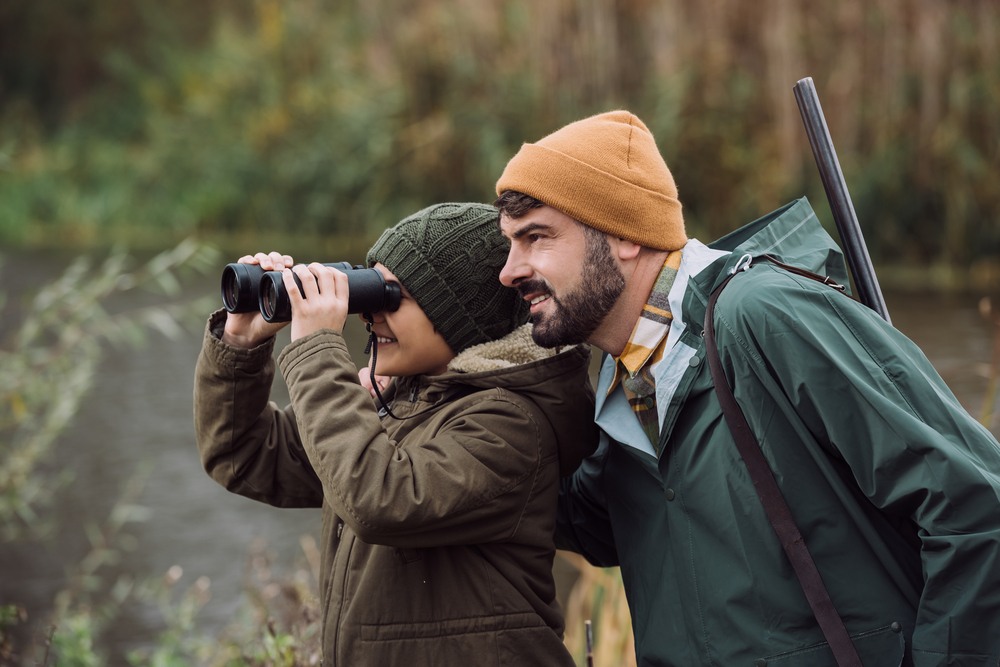
Not all binoculars are the same; some binoculars are for hunting, some for birding, and more complicated ones are used by the military. Before heading out to view birds, be sure your binoculars are specifically for bird-watching.
You might ask, “What’s the difference?”
Yes, they all have four lenses and almost similar appearances. However, the critical difference between them – and what they can do – depends on a combination of numbers. These are usually displayed on the device’s side in the form of 10 x 25 or 8 x 50.
The first number describes the strength, or magnification, of the lenses. For instance, a binocular with a 10 x 25 rating means it magnifies its objects by 10.
The second number is the diameter of the objective lens – the lens farthest from your eyes. The larger the lens, the more light and, therefore, better viewing. Using the previous example, that binocular has objective lenses with a 25 mm diameter.
Ideally, you need no more than a 7 or 8 magnification for birding, while the lens diameter could be between 25 mm and 40 mm.
Once you are sure you have the right tool in your hands, go find a bird! Having spotted a bird using only your bare eyesight, quickly raise the binoculars to your eyes, and use the focus wheel to adjust focus for the sharpest image.
Conclusion
Your binocular’s magnification power often determines how easily you learn to use them. Most people learn faster using binoculars with lower magnification before proceeding to more powerful ones. Whichever you choose, follow the steps above, and you’ll be a pro in no time!


